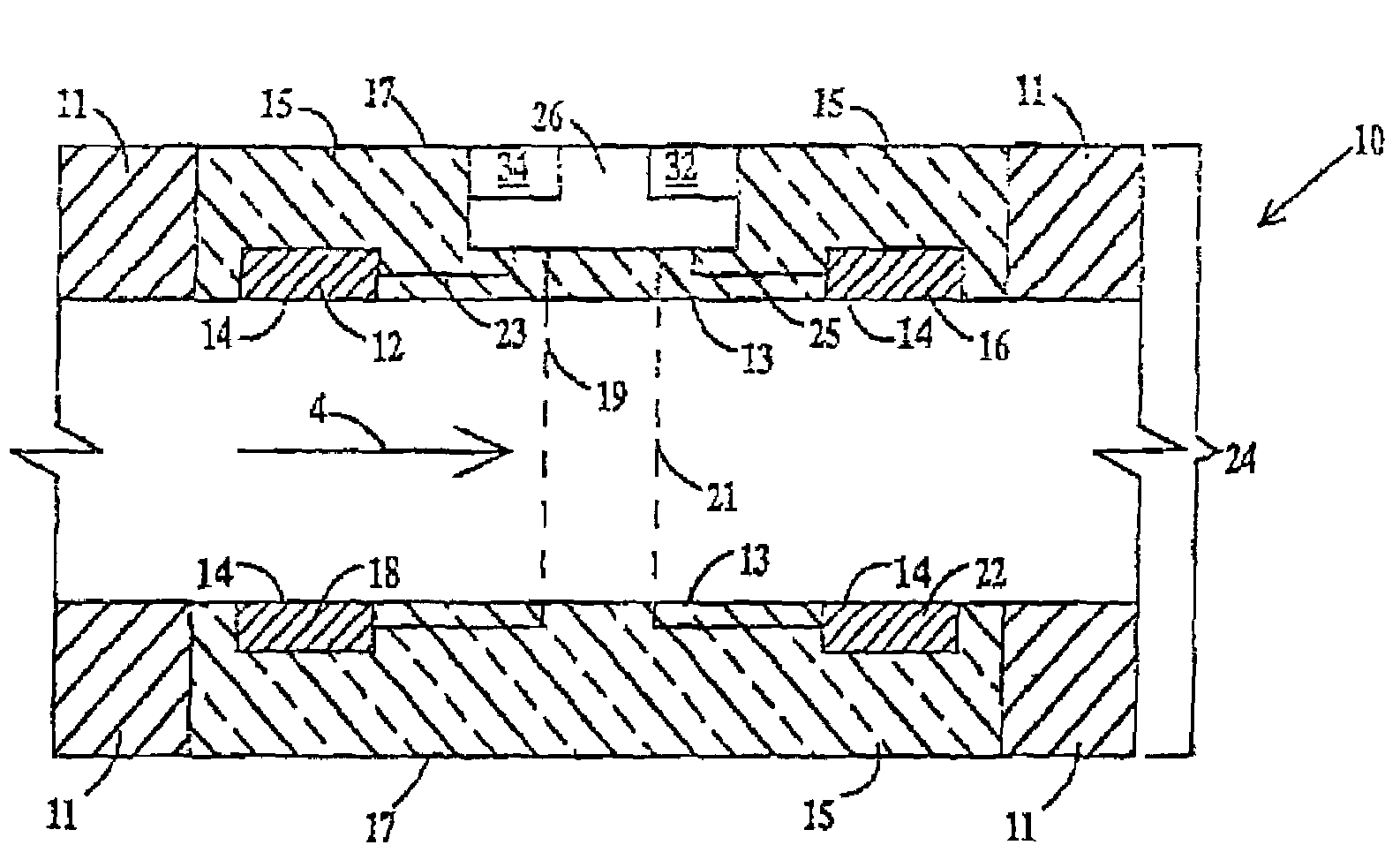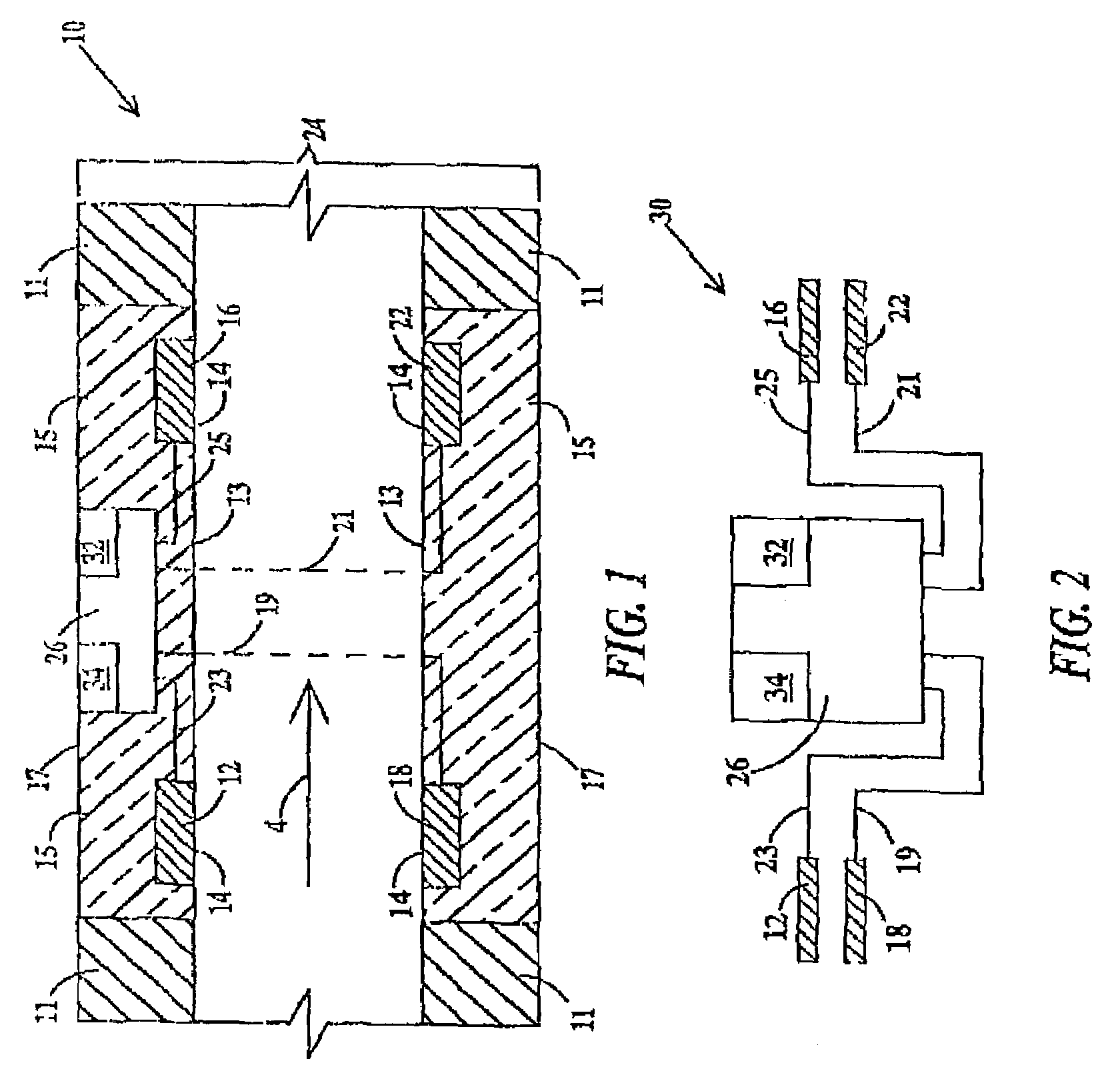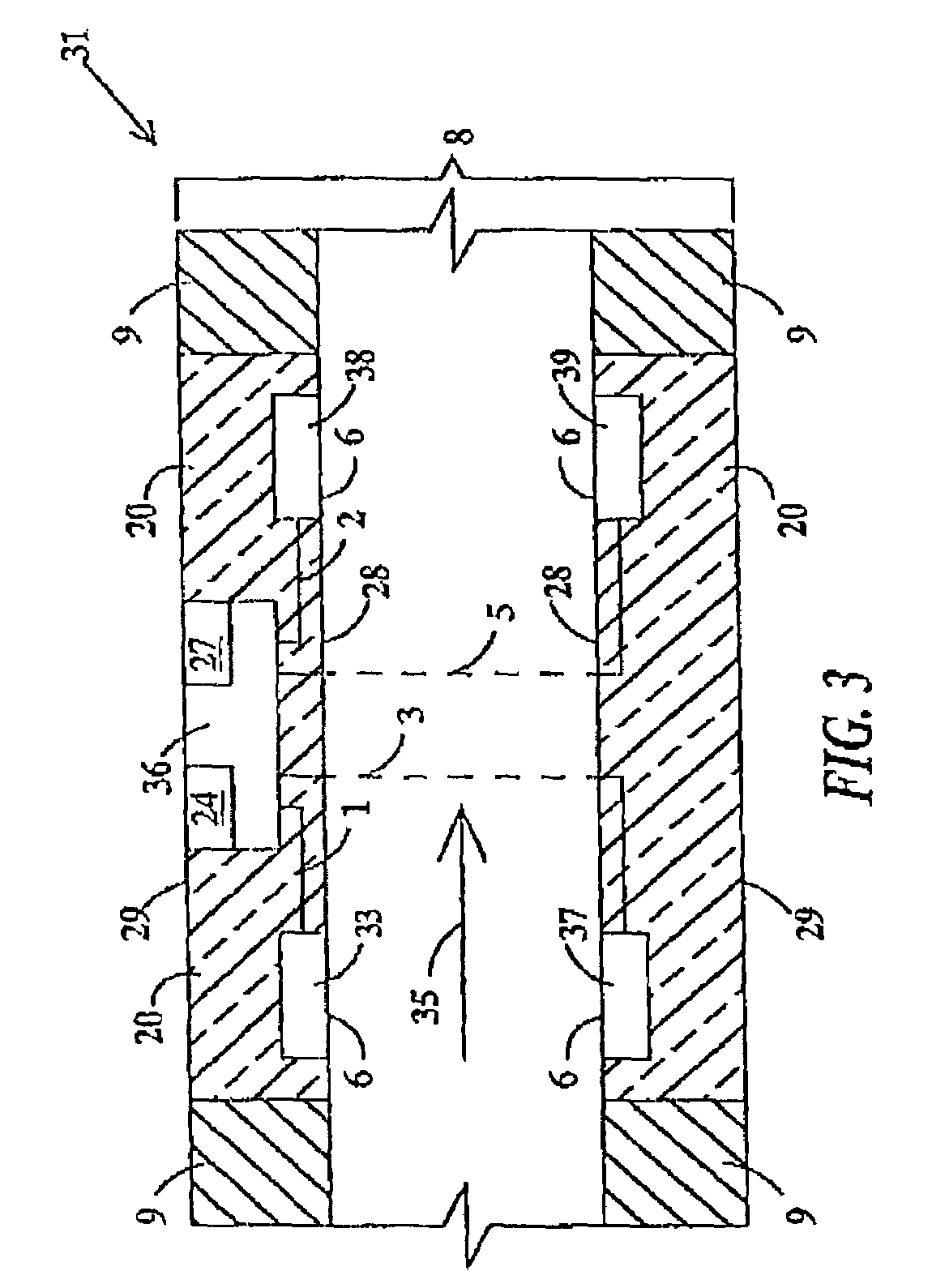Nanodevices, microdevices and sensors on in-vivo structures and method for the same
a technology of nanodevices and sensors, applied in the field of nanodevices, microdevices and sensors on in-vivo structures, can solve the problems of drug effectiveness reduction, difficult diagnosis and treatment by these common techniques,
- Summary
- Abstract
- Description
- Claims
- Application Information
AI Technical Summary
Problems solved by technology
Method used
Image
Examples
Embodiment Construction
[0028]FIG. 1 depicts a longitudinal cross-section of an in-vivo apparatus 10 that comprises a tube 24 having an inner surface 13, an outer surface 17 and a body 11. Hereinafter, a “tube” is a portion of an “internal medical device” such as a catheter, stent, endoscope, defibrillator or the like. The catheter, endoscope, or defibrillator may be used for biodetection of infection or patient monitoring, e.g., liver, heart enzymes and blood glucose. Hereinafter, a “stent” is a small, expandable wire mesh tube. The stent may be either a vascular stent or a urinary stent. The defibrillator is an implantable defibrillator such as that disclosed in U.S. Pat. No. 6,358,247 which is hereby incorporated by reference. “Nanodevice(s)” may be any inorganic device on the order of magnitude of 1 nanometer (nm) to 800 nanometers. However, a typical nanodevice will be between 5–100 nm. Examples of nanodevices include nanotubes, nanoparticles (such as lithium particles), buckyballs, and nanowires made...
PUM
 Login to View More
Login to View More Abstract
Description
Claims
Application Information
 Login to View More
Login to View More - R&D
- Intellectual Property
- Life Sciences
- Materials
- Tech Scout
- Unparalleled Data Quality
- Higher Quality Content
- 60% Fewer Hallucinations
Browse by: Latest US Patents, China's latest patents, Technical Efficacy Thesaurus, Application Domain, Technology Topic, Popular Technical Reports.
© 2025 PatSnap. All rights reserved.Legal|Privacy policy|Modern Slavery Act Transparency Statement|Sitemap|About US| Contact US: help@patsnap.com



